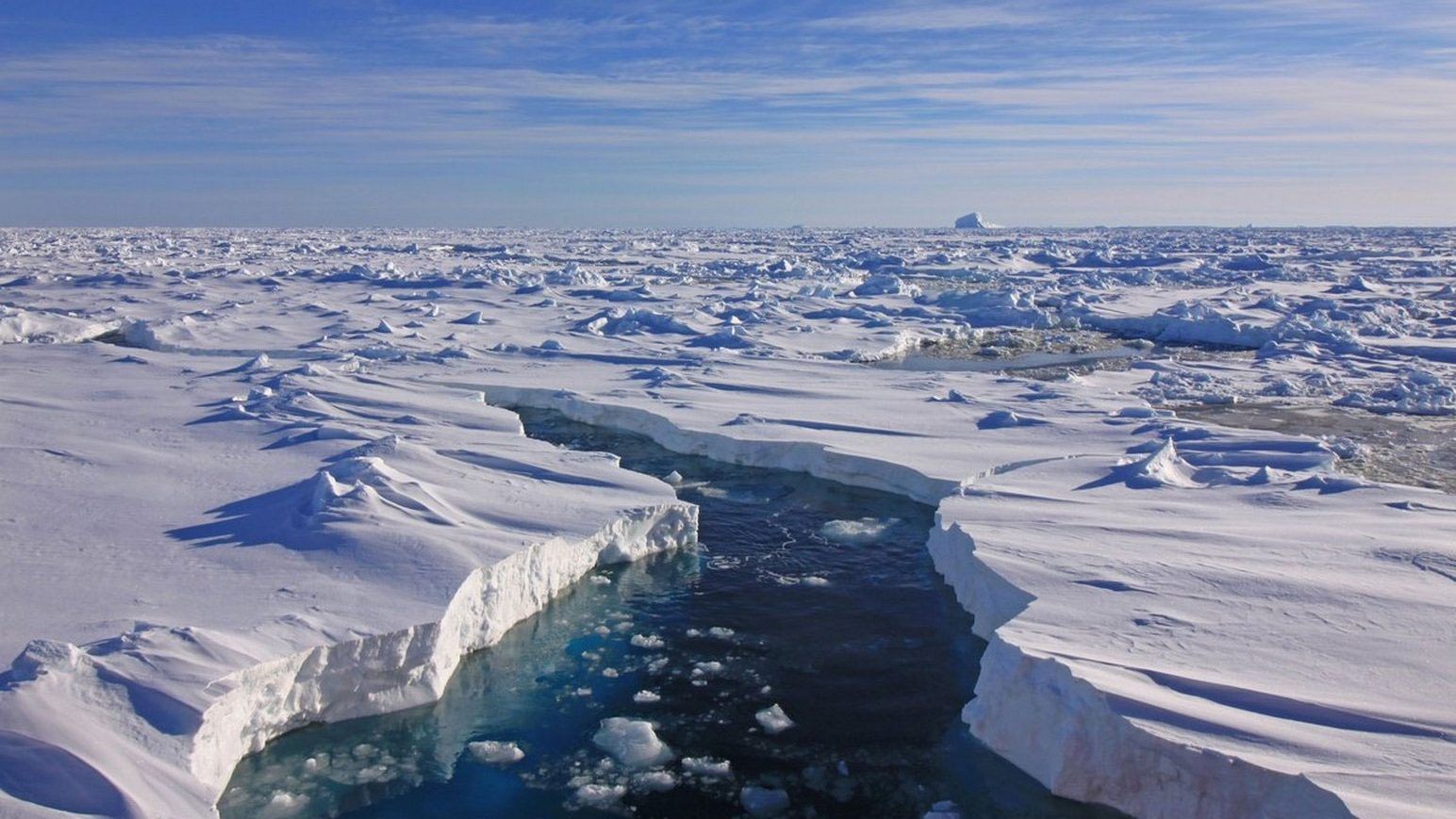Target of opportunity (1992)
When we descended to commence our magnetic survey the splendid desolation of the Arctic came home. Flying at sixty meters over the white and aquamarine patchwork of the ice-covered ocean, riddled with melt pools as summer breakup quickly approached, we had only the shadow of the aircraft for company. The low islands, little more than gravel and sand dunes, rarely exceeded five meters in height. Sweeping over them one could not help but pity anyone forced to fight for survival on this barren terrain. As we roared overhead, the large Ugjulik seals, peacefully sleeping in the sun near their breathing holes, slipped into the safety of their under-ice domain to escape this strange annoying southern bird. I could not help thinking that before the day was over some of them would probably swim within sight of the wreck that we were seeking.
I had little to do besides sightseeing. Even though the landscape was uninspiring I was glued to the viewport as we roared over the geographical features that I only knew from charts or my research – Kirkwall Island, Grant Point, and Sherman Inlet all became real to me. The actual survey, like most missions professionally done, soon became routine. Taking turns at the controls the three pilots expertly flew the lines while the navigators kept up a constant stream of navigational advice “on track, drifting left, on, five right.” Even after seven hours of continuous on task time it was rare to hear of a diversion from the track of more than ten meters. Brad would later describe it as the equivalent of “driving a car for hours at a time, at 200 knots, up and down a 20-kilometre x 20 kilometre parking lot, blindfolded, with someone whispering in your ear, you’re 10 metres off to the left!” This was a truly impressive display of airmanship that impressed even an old submariner like me (who was trained to loathe and fear all Aurora crews).
As the mission wore on, I checked off the completed lines on my chartlet and it became apparent that we would not complete the survey box that I had laid out. I had been given one day’s mission time and had underestimated the amount of time it would take to mobilize and transit to and from Yellowknife. Even so, as we commenced the return to Yellowknife, I was quite pleased with the coverage we had obtained, which I felt was over the most-probable area for the wreck.
On the long flight back to base Scott and Major Sarich went into conference with Brad in the forward part of the cabin. As Scott walked back to me he had the set expression of someone about to convey bad news. I fully expected that he would tell me that we were finished, perhaps even that we had failed to obtain any useful data. Scott started by confirming to me that the planned flight itinerary for the next day called only for a short two-hour hop from Yellowknife south to Edmonton. That short day was intended to give the crew a brief partial “rest day” after a long deployment. As planned, I would leave them in Yellowknife to take advantage of a separate flight to my home in Victoria on the west coast. He explained that we had only managed to finish half of the survey area we had planned, so there was “good news and bad news.”
The good news was that Scott had canvassed the crew, and they had unanimously decided to forgo an easy day for another full flying day on the Franklin wreck to complete the mission. The plan was to take the fifteen-hundred-kilometre “detour” back to the search area, but fuel and time would then require them to proceed directly to Edmonton. Scott earnestly explained that if I wished I could take my own preplanned flight home the next day, and the crew would continue under Brad’s direction. The “bad news” was that the change in plans would mean that if I remained with the mission, entirely my own choice, my own travel arrangements home would be disrupted since they would be dropping me off in the wrong city.
Was that alright with me? I couldn’t believe my ears, and to preserve any semblance of the required detached military attitude required of a Naval Officer I had to avert my misting eyes and brusquely confirm that I would stay with the team, and ask that Scott thank them on my behalf.
That night as the crew mustered in the hotel restaurant I was still flushed with pleasure that I had been privileged to join them and was being offered another day. I laid my credit card on the bar and informed the multitude (this Aurora crew numbered 17!) that “the drinks were on the Navy!” It was almost midnight and had been a long day, and I knew that the pilots were under a very strict alcohol regime, so I figured that I could get away with one round – these were airmen after all, not heavy-drinking sailors.
The next morning, after a very expensive lesson in power-drinking-for-effect that left me with an awkward credit card bar bill to explain to my wife, we all mustered at the aircraft to do it all over again. I seemed to be only one worse for wear and repaired to my perch with two bottles of tomato juice, as everyone else smilingly and expertly went about their business getting the aircraft ready. The flight north and remaining survey were a repeat of the previous day’s work – I barely registered the now-familiar landscape through bloodshot eyes as I checked off the remaining lines on my chart.
